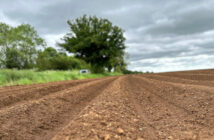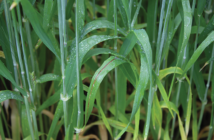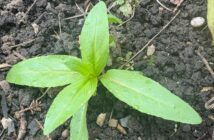Cereal growers have difficult decisions to make about seed this autumn if their variety choices are to strike the right balance between market suitability and business risk, cautions a leading independent agronomist.
With yield and quality information from this harvest still to be finalised, initial results and farmer feedback suggest that consistent performance has been scarce, with some variety results being hard to explain, says Jock Willmott of Ceres Rural.
As such, picking the right variety mix is not an easy task, as the 2021 growing season exposed the vulnerability of varieties to diseases, even those given high resistance ratings, he notes.
“It’s a very fluid situation,” says Jock. “The logistics of getting seed onto farm after a delayed harvest have to be weighed up against protecting the farm business from unnecessary risk by growing susceptible or inconsistent varieties.”
For those intending to home save more seed this year, quality is slightly down and seed-borne disease levels are generally high, he notes. “You may need to dress it hard, so start with a big pile. A good fusarium active seed dressing in likely to be required,”
On variety selection, Mr Willmott acknowledges that there have been some very disappointing results with certain varieties this harvest, which have either been due to susceptibility to disease or stress-related issues caused by weather extremes.
“After a very cold and dry April, the situation changed very rapidly from being comfortable going into harvest around May time to seeing a septoria explosion from mid-June.
“We are still to fully understand the repercussions of that, but growers will be hoping they don’t see the same issues again. With potentially fewer high resistance varieties to choose from, we have to assume that septoria pressure will be at least moderate next year.”
He points out that yellow rust susceptibility is narrowing the Group 1 and hard Group 4 winter wheat options while septoria concerns are limiting the soft wheat choices.
“It’s a shame that some of the newer material is not performing as expected. These varieties were marketed as able to take some of the pressure off and reduce risk.”
His advice is to farmers is to grow the varieties that they feel comfortable with, even if that means trading a slight yield penalty or lower disease resistance for consistency.
“With rust, it’s true that we have the chemistry to deal with it. But if we can’t spray it on time, it becomes a much bigger problem.”
Crusoe is his pick of the Group 1s, providing it is grown as a first wheat and its brown rust risk is monitored.
Group 2 Extase has shown some yield variability in 2021, so Mr Willmott recommends that it is only grown as a first wheat with an October drilling date until more is known.
The Group 3 sector is tricky as the choices all have some negatives, he warns. “This group has been badly affected by susceptibility to septoria, due to the predominance of Cougar parentage.
“If you’re growing one of these varieties, then all of the other factors have to be in line. Remember that a thick crop drilled early is likely to come under a great deal of septoria pressure next spring.”
This advice also applies to the soft Group 4s Skyscraper, Spotlight and possibly Saki for the same reason, while he prefers some of the established hard Group 4s to their newer counterparts.
“Varieties such as Graham and Gleam have been more reliable and consistent than recent introductions, even if they have lost the edge on disease resistance.”
Seed availability will dictate much of what is grown in the 2021/22 season, Mr Willmott accepts, but he adds that previous experience of growing a variety can be invaluable.
“If you’ve grown something that’s fared particularly badly this year, there’s still time to change your line-up for next year.”




